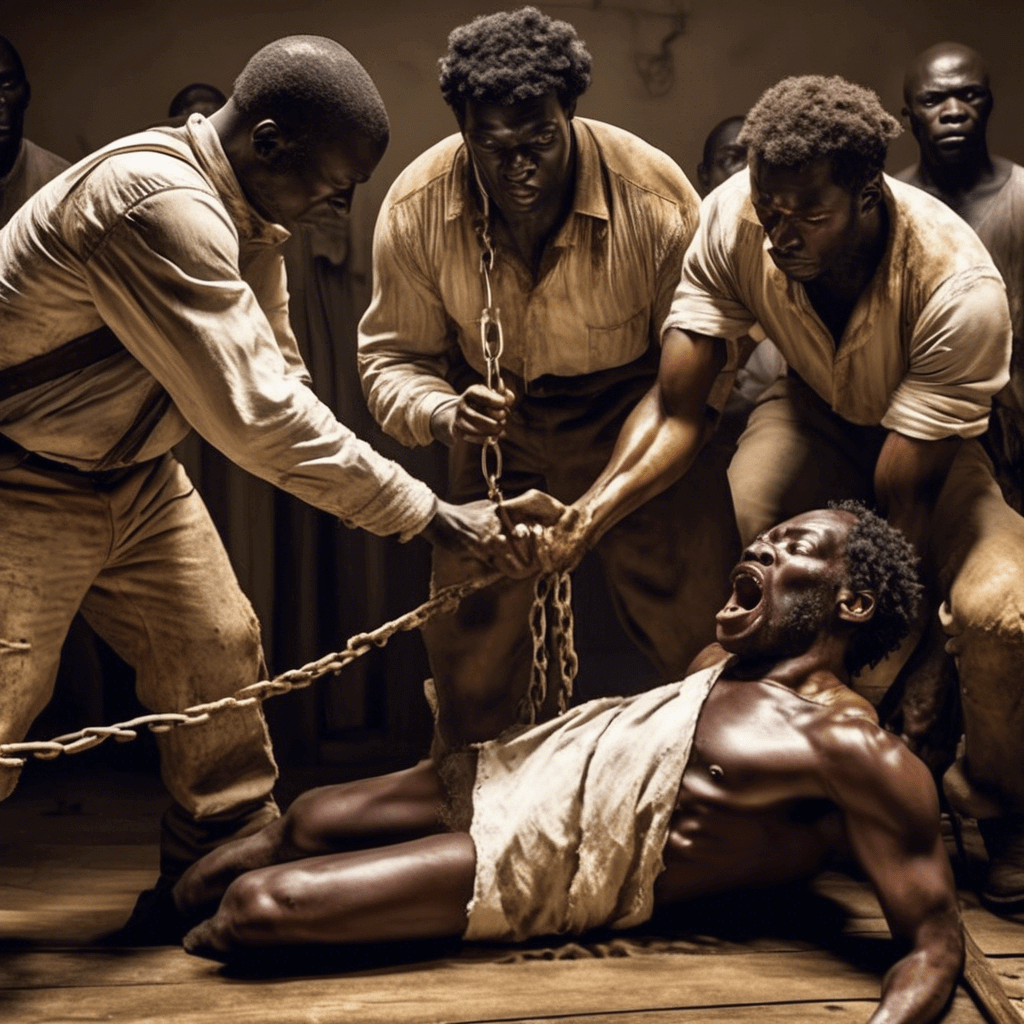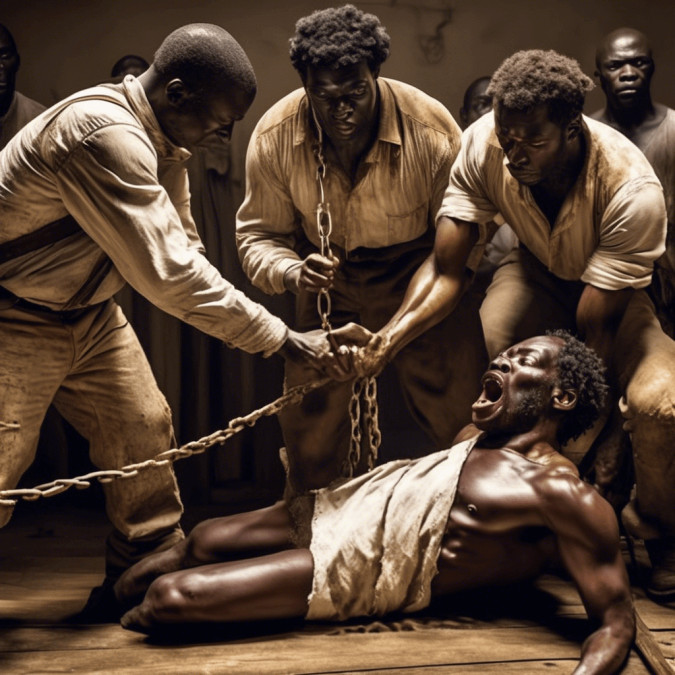
1. Introduction
Overview of the Transatlantic Slave Trade:
The transatlantic slave trade, also known as the Atlantic slave trade, was a dark period in history that involved the transportation of enslaved Africans to the Americas by European colonizers. It was one of the largest forced migrations in history and had profound consequences for African communities, shaping the economies and societies of both Africa and the Americas.
Context of European Colonization and Expansion:
The transatlantic slave trade emerged in the context of European colonization and expansion during the Age of Discovery. European powers sought to establish colonies in the Americas and needed a cheap labor force to sustain their agricultural enterprises, leading to the exploitation of African labor through slavery.
Significance of Understanding the Impact of Slavery on African Communities:
Understanding the impact of slavery on African communities is crucial for recognizing the historical injustices and intergenerational trauma resulting from the transatlantic slave trade. It sheds light on the resilience and cultural heritage of African descendants and underscores the importance of addressing systemic inequalities rooted in the legacy of slavery.
2. Origins of the Transatlantic Slave Trade
Development of the Transatlantic Slave Trade:
The transatlantic slave trade evolved in the 15th century with the Portuguese exploration of Africa’s coast. It grew exponentially as European powers established trading posts and forts along the African coast to facilitate the capture and transportation of enslaved Africans to the Americas.
Factors Driving the Demand for Enslaved Africans:
The demand for enslaved Africans was driven by the labor-intensive nature of plantation agriculture in the Americas, particularly sugar, tobacco, and cotton production. European colonizers viewed Africans as a source of cheap and abundant labor, leading to the high demand for enslaved individuals.
Role of European Countries in the Slave Trade:
European countries such as Portugal, Spain, England, France, and the Netherlands played a significant role in the transatlantic slave trade. They established trading networks, supplied goods in exchange for enslaved Africans, and profited from the brutal exploitation of human beings for economic gain.
3. Capture and Transportation of Africans
Methods of Capturing Slaves in Africa:
Slaves in Africa were captured through various means, including warfare, kidnapping, and raids on villages. African intermediaries, known as “middlemen,” collaborated with European slavers to capture and trade enslaved individuals from different regions of the continent.
Middle Passage: Conditions on Slave Ships:
The Middle Passage refers to the journey across the Atlantic Ocean on slave ships, where enslaved Africans endured horrific conditions. They were cramped in overcrowded and unsanitary conditions, subjected to disease, malnutrition, and brutality by the crew, resulting in high mortality rates during the voyage.
Arrival and Sale of Enslaved Africans in the Americas:
Upon arrival in the Americas, enslaved Africans were sold at auctions to plantation owners and traders. Families were often separated, and individuals were forced into backbreaking labor on plantations, enduring harsh treatment and dehumanization at the hands of their enslavers.
4. Life as a Slave | Black Slavery
Plantation Labor and Living Conditions:
Enslaved Africans toiled in grueling conditions on plantations, working long hours in the fields cultivating crops or in domestic settings serving their enslavers. They lived in crowded and inadequate housing, lacked basic amenities, and faced physical and psychological abuse as part of their daily existence.
Resistance and Uprisings by Enslaved Africans:
Despite the oppressive circumstances, enslaved Africans engaged in acts of resistance and rebellion against their enslavers. From subtle forms of defiance to organized revolts and escape attempts, they asserted their agency and fought for freedom and dignity in the face of extreme adversity.
Cultural and Religious Practices Among Enslaved Populations:
Enslaved Africans maintained their cultural heritage and traditions in the Americas through music, dance, storytelling, and religious practices. They created vibrant communities and spiritual beliefs that provided solace and resistance against the dehumanizing effects of slavery, preserving their identity and resilience.
5. Abolitionist Movements | Transatlantic Slave Trade
Early Abolitionist Efforts in Europe and America:
Abolitionist movements emerged in Europe and America in the 18th and 19th centuries, advocating for the end of slavery and the slave trade. Prominent abolitionists like William Wilberforce, Frederick Douglass, and Harriet Beecher Stowe campaigned tirelessly for the abolition of slavery and the recognition of the humanity of enslaved Africans.
Impact of Abolitionist Movements on the Slave Trade:
Abolitionist efforts led to increased awareness of the atrocities of slavery and pressured governments to enact legislation abolishing the slave trade. The abolitionist movements sparked public debate, moral outrage, and ultimately contributed to the decline and eventual abolition of the transatlantic slave trade.
Abolition of the Transatlantic Slave Trade:
The transatlantic slave trade was officially abolished in the 19th century through legislation such as the British Slave Trade Act of 1807 and the US Emancipation Proclamation of 1863. These legal measures marked a significant milestone in the fight against slavery and the recognition of the inherent rights and dignity of all individuals.
6. Legacy of the Transatlantic Slave Trade
Economic Impact on Africa and the Americas:
The transatlantic slave trade had profound economic consequences for Africa and the Americas. African societies were destabilized, populations were decimated, and traditional economies were disrupted, while the Americas benefited from the forced labor of enslaved Africans that fueled the growth of plantation economies.
Social and Cultural Repercussions for African Diaspora Communities:
The legacy of the transatlantic slave trade shaped the social and cultural identities of African diaspora communities in the Americas and beyond. Enslaved Africans and their descendants faced systemic discrimination, racism, and marginalization, which continue to impact their experiences and opportunities in contemporary society.
Long-Term Effects on Racial Attitudes and Inequalities:
The transatlantic slave trade contributed to the development of racial hierarchies and prejudices that persist to this day. The legacy of slavery is reflected in systemic inequalities, racial disparities, and ongoing struggles for justice and equality faced by African diaspora populations in education, employment, and access to resources.
7. Reparations and Reconciliation
Calls for Reparations for Descendants of Enslaved Africans:
There are ongoing calls for reparations to be made to the descendants of enslaved Africans as a form of acknowledgment and redress for the historical injustices of slavery. Reparations may take various forms, including financial compensation, educational initiatives, and community development programs aimed at addressing the lasting impact of slavery.
Truth and Reconciliation Initiatives:
Truth and reconciliation initiatives seek to confront the legacy of slavery and promote healing and understanding between communities affected by historical injustices. These processes involve acknowledging the truth of past atrocities, fostering dialogue, and working towards reconciliation and collective healing.
Efforts to Address Systemic Racism and Inequality Stemming from Slavery:
Efforts to address systemic racism and inequality rooted in the legacy of slavery are ongoing in various sectors of society. Advocacy for social justice, policy reforms, and initiatives to promote diversity and inclusion aim to dismantle structural barriers and address the enduring impact of historical injustices on marginalized communities.
8. Contemporary Perspectives
Modern Manifestations of Racism and Discrimination:
Despite progress towards racial equality, modern society continues to grapple with manifestations of racism and discrimination. Issues such as police brutality, racial profiling, and disparities in healthcare and education highlight the persistent challenges faced by African diaspora populations in the fight against systemic racism and injustice.
Celebrating African Resilience and Cultural Heritage:
Amidst adversity, African diaspora communities celebrate their resilience, cultural heritage, and contributions to society. From art, music, and literature to activism and social movements, African descendants continue to affirm their identity, reclaim their history, and inspire future generations with their strength and creativity.
Education and Awareness Initiatives on the History of Slavery:
Education and awareness initiatives play a crucial role in confronting the legacy of slavery and promoting understanding and empathy across communities. By teaching the history of the transatlantic slave trade and its impact on societies, individuals can engage in meaningful dialogue, challenge misconceptions, and work towards a more inclusive and equitable future.
9. Resources
Books, Articles, and Documentaries on the Transatlantic Slave Trade:
– “The Slave Ship: A Human History” by Marcus Rediker
– “Barracoon: The Story of the Last ‘Black Cargo'” by Zora Neale Hurston
– “12 Years a Slave” by Solomon Northup
– Documentary: “Slavery and the Making of America”
Online Archives and Databases for Further Research:
– Trans-Atlantic Slave Trade Database
– UNESCO Slave Route Project
– Library of Congress: African American Odyssey
– National Museum of African American History and Culture
Museums and Historical Sites Related to the History of Slavery:
– National Museum of African American History and Culture (USA)
– International Slavery Museum (UK)
– Cape Coast Castle (Ghana)
– Elmina Castle (Ghana)
10. Conclusion
In conclusion, the transatlantic slave trade remains a dark chapter in history that continues to reverberate through the present day. By exploring the origins, impact, and legacy of slavery, we gain a deeper understanding of the complexities of human history and the enduring resilience of African diaspora communities. It is imperative to confront the injustices of the past, promote reconciliation and reparations, and strive towards a more just and equitable future for all.
11. Glossary
– Transatlantic Slave Trade: The transportation of enslaved Africans to the Americas by European colonizers for forced labor.
– Middle Passage: The journey across the Atlantic Ocean on slave ships, where enslaved Africans endured harsh conditions.
– Abolitionist Movements: Social and political campaigns advocating for the end of slavery and the slave trade.
12. Appendix
Timeline of Significant Events in the Transatlantic Slave Trade:
– 1441: Portuguese begin slave trade with Africa
– 1807: British Parliament abolishes the slave trade
– 1865: US abolishes slavery with the 13th Amendment
This comprehensive article delves into the history of the transatlantic slave trade, examining its origins, impact, and enduring legacy on societies worldwide. By acknowledging the complexities of this historical phenomenon, we pave the way for a more inclusive and just future for all individuals affected by the legacy of slavery.
